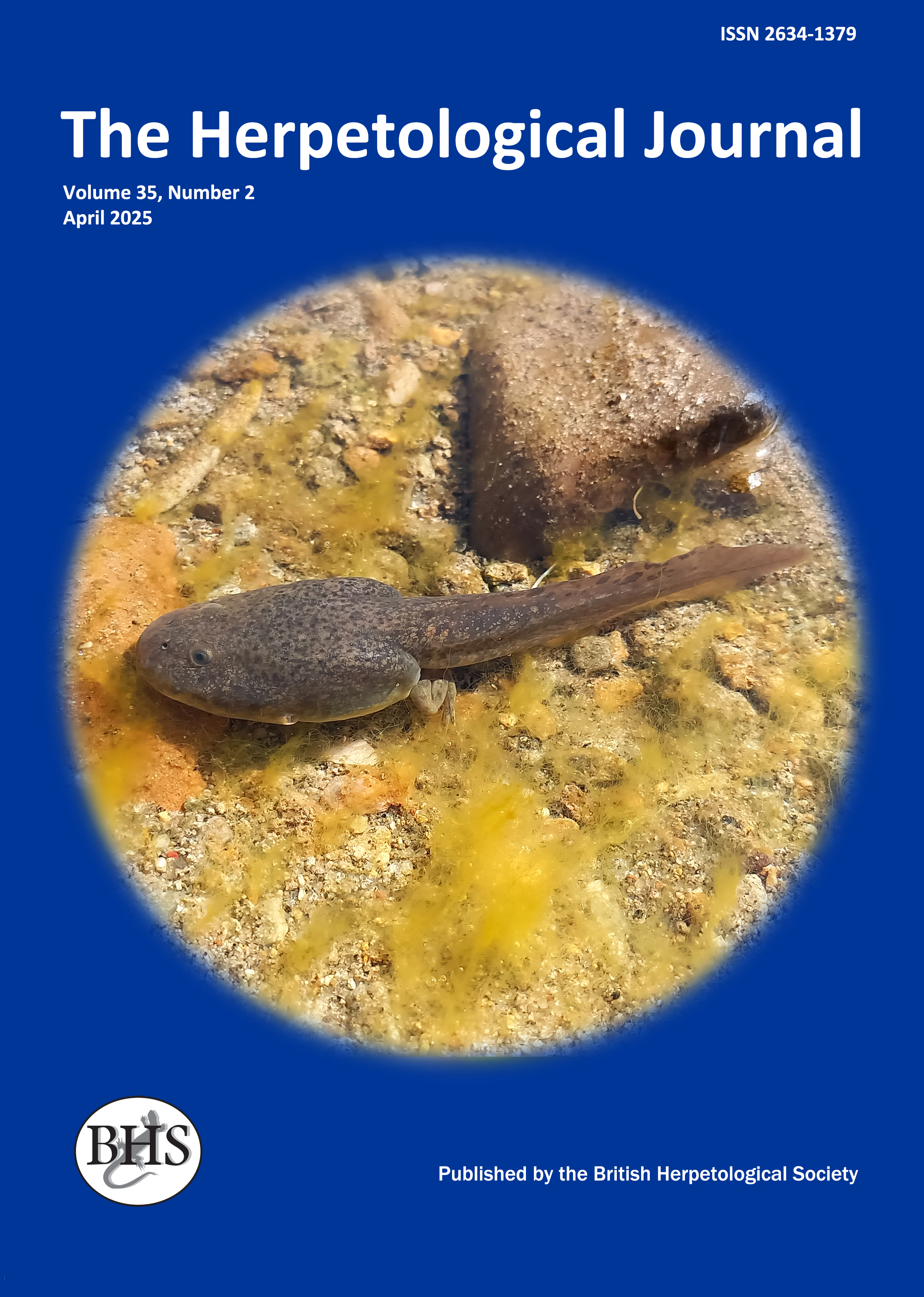
The Herpetological Journal
The Herpetological Journal is the Society's prestigious quarterly scientific journal. Articles are listed in Biological Abstracts, Current Awareness in Biological Sciences,Current Contents, Science Citation Index, and Zoological Record.
ISSN 0268-0130
2021 Impact Factor from Clarivate for the Herpetological Journal is 1.194, an increase of 0.332 from 2020.
pdf 02. Effects of habitat and fragmented-landscape parameters on amphibian distribution at a large spatial scale
849 downloads
Open Access
pp. 73-84
Authors: Audrey Trochet, Jérémy Dechartre, Hugo Le Chevalier, Boris Baillat, Olivier Calvez, Simon Blanchet & Alexandre Ribéron
Abstract: Amphibians generally have low dispersal abilities and are often habitat specialised, which makes them particularly sensitive to landscape changes, such as habitat destruction and fragmentation. Because they depend on wetlands for breeding, many conservation studies focus on aquatic habitat degradation and destruction. Additionally, few studies showed that changes in terrestrial habitats could be another threat that may cause the decline of amphibian populations. However, little is known about the terrestrial habitat preferences of most species. Although the proximity of forests and wetlands was expected to be positively related to amphibian presence, while human-modified habitats were expected to be avoided by these species, we still have little information on how these responses are species-specific. Based on an ecological niche factor analysis completed by partial least squares path modelling, we tested whether or not relationships between terrestrial and aquatic habitat parameters and occurrences are congruent across a metacommunity of seven amphibian species co-occurring at the regional spatial scale. We highlight that habitat type could strongly affect amphibian presence at large spatial scales, but in different ways. Agricultural landscapes, semi-natural areas and fragmented-landscape parameters showed expected negative correlations with the presence of some species. However, these habitats were also positively associated to the presence of other species. Indeed, because they could offer some benefits, some species could show a preference for these landscapes. Our results should have implications in conservation programmes, and could help predict future distribution and responses of these species to global change, which could be different among species.
Key words: agricultural landscapes, amphibian presence, ecological niche factor analysis, habitat preference, landscape parameters, partial least squares path modeling

